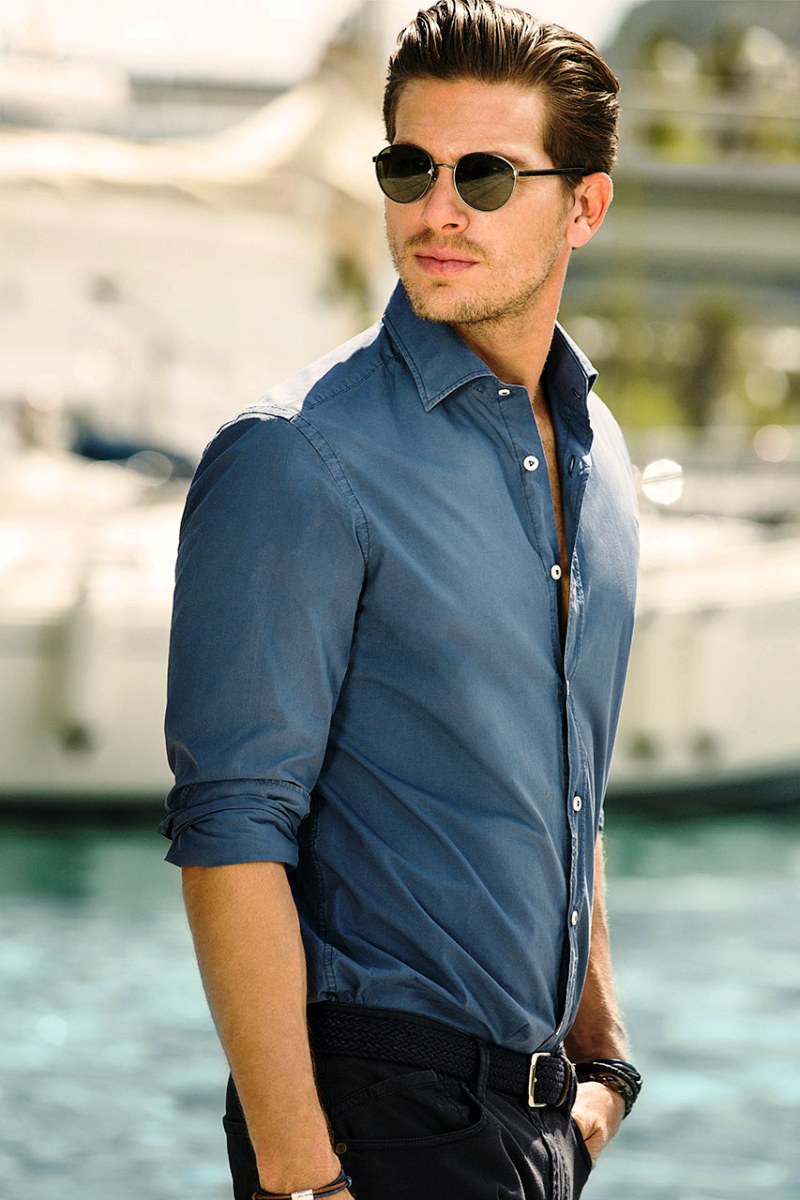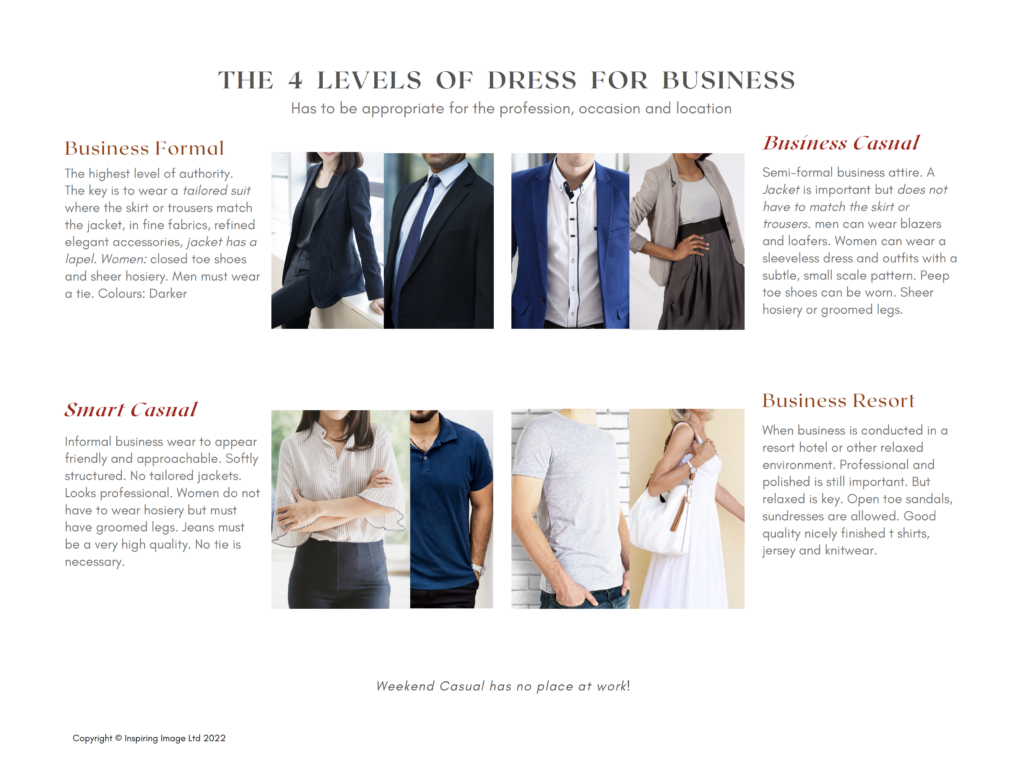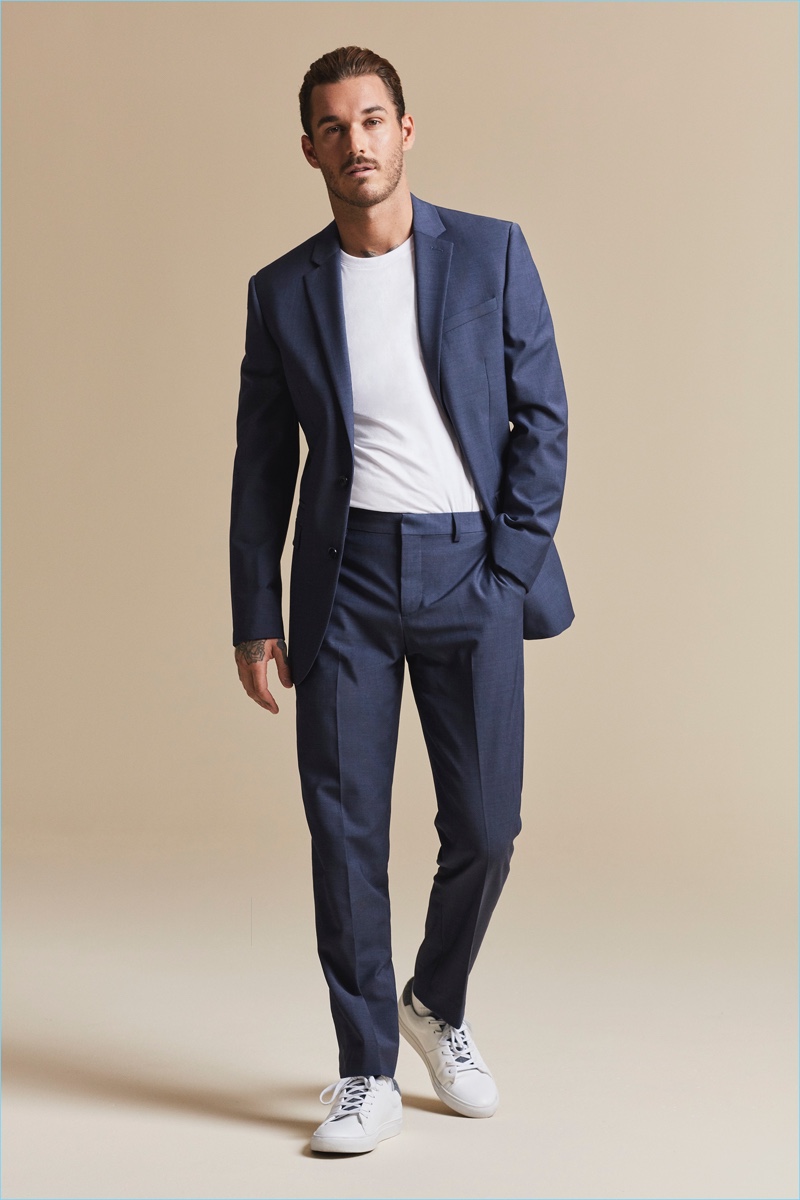Choosing between formal and casual attire is a common decision that affects how we present ourselves to the world. With various dress codes and expectations depending on events and settings, it can often be challenging to determine the best fit for any occasion. Whether you’re preparing for a job interview, a wedding, a day at the office, or just running errands, understanding the differences between formal and casual wear can help you look and feel your best.
Formal attire embodies elegance, structure, and sophistication. Characterized by tailored fits, high-quality materials, and typically neutral or dark color schemes, formal wear is designed to communicate professionalism and respect. The pieces that make up formal attire often include suits, dress shirts, ties, polished shoes, and accessories like cufflinks or watches.
In formal settings, dressing well is usually expected and often impacts how others perceive you. A well-fitted suit, for instance, can be associated with authority and reliability, especially in professional or social events such as weddings, award ceremonies, and high-profile corporate meetings. Here are a few defining elements of formal attire:
- Tailored Fit: Formal clothing is often custom-fitted or adjusted to create a sleek silhouette.
- Neutral Colors: Traditional colors include black, navy, gray, and white, though some settings may allow for subtle color accents.
- High-Quality Fabrics: Formal pieces often use premium materials such as wool, silk, and cotton blends.
- Minimalist Accessories: Less is more in formal settings; accessories like ties and cufflinks should be simple and elegant.
In addition to personal style, formal wear often reflects respect for the event and the people attending. Think of it as a social cue: by dressing formally, you acknowledge the importance of the occasion.
What Defines Casual Style?
Casual attire is all about comfort and self-expression. This style is more flexible, often incorporating a wide range of fabrics, colors, and fits. Unlike formal wear, which adheres to specific standards, casual clothing allows for more personalization and spontaneity. From jeans and t-shirts to sneakers and hoodies, casual outfits are ideal for informal gatherings, daily errands, and relaxed social events.
Casual style is perfect for scenarios where you prioritize comfort and ease of movement. It allows you to express your unique personality while staying practical. Here are some key characteristics of casual attire:
- Relaxed Fit: Casual wear typically prioritizes comfort over structure, with looser cuts and more flexible fabrics.
- Variety of Colors: Unlike the typically muted palette of formal wear, casual attire often features bold or vibrant colors and patterns.
- Everyday Fabrics: Materials like cotton, denim, and synthetics are popular due to their durability and comfort.
- Freedom in Accessories: Casual wear allows for accessories like hats, scarves, and playful jewelry, offering more room for personal expression.
Casual attire is also more versatile in day-to-day situations, easily adaptable for settings such as a coffee meetup, a shopping trip, or a casual dinner. However, it’s important to note that while casual clothing is flexible, choosing appropriate pieces still matters.

The Key Differences Between Formal and Casual Wear
Understanding the differences between formal and casual attire is essential for making the right choice in any setting. Each style has unique characteristics, benefits, and limitations that impact not only how you look but also how you’re perceived by others. Let’s explore these distinctions to understand when formal or casual attire might be more appropriate.
Style and Aesthetic
Formal and casual attire differ significantly in their overall style and aesthetic. Formal wear is built around a sleek, polished look that emphasizes structure, clean lines, and a certain level of sophistication. Outfits are carefully coordinated, with every piece working together to create a cohesive appearance. Formal attire often involves classic designs, like a suit and tie or an elegant dress, which convey authority and respect.
In contrast, casual attire focuses on comfort, flexibility, and a more relaxed fit. The aesthetic is less rigid, allowing for a greater variety of fabrics, cuts, and color combinations. Casual styles are less about traditional fashion rules and more about individual expression. For example, a casual outfit might include jeans, sneakers, and a graphic t-shirt, projecting a laid-back vibe that’s comfortable and unpretentious.
Cost and Accessibility
One of the biggest differences between formal and casual wear is the cost. Formal clothing is often more expensive, especially if it’s tailored or made from high-quality materials like wool, silk, or cashmere. Suits, dress shoes, and other formal accessories typically come with a higher price tag, as they’re designed to last and convey a polished, professional look.
On the other hand, casual attire is generally more affordable and widely accessible. Basic t-shirts, jeans, and sneakers are not only more economical, but they’re also easier to replace. Casual wear is available in a broader range of stores, from high-end boutiques to budget-friendly retail chains, making it suitable for individuals with varying budgets.
Here’s a comparison table to illustrate these differences:
| Feature | Formal Wear | Casual Wear |
|---|---|---|
| Fit | Tailored, structured | Relaxed, comfortable |
| Color Palette | Neutral, understated | Diverse, includes bold colors |
| Fabrics | Premium (wool, silk) | Everyday (cotton, denim) |
| Cost | Generally higher | More affordable |
| Accessibility | Limited to specialty stores | Widely available |
Versatility and Functionality
When considering versatility, casual attire is often the more functional choice. Casual clothes are designed for flexibility and daily wear, making them ideal for a wide range of informal settings. They’re comfortable and easy to move in, which is why they’re popular for activities like shopping, casual dining, and outdoor events. Casual wear’s adaptability makes it a go-to option for people with busy schedules who need clothing that transitions well throughout the day.
Formal attire, while less versatile, has a specific purpose: to make a strong impression in situations that require it. Although formal clothing is generally less flexible, it shines in professional and ceremonial settings where polish and elegance are key. A well-tailored suit or a refined evening dress might not be comfortable for everyday activities, but it communicates respect and authority when the occasion demands it.
Comfort and Practicality
Comfort is one of the most significant factors influencing people’s choice between formal and casual attire. Casual wear is often designed with comfort in mind, featuring looser fits and softer materials that allow for unrestricted movement. Whether you’re lounging at home or running errands, casual clothing prioritizes practicality and ease, making it a practical option for everyday wear.
Formal wear, on the other hand, can sometimes be restrictive due to its tailored fit and structured design. Although advancements in fabric technology have introduced more comfortable options within formal wear, such as stretch fabrics and softer linings, it still often falls short in comfort compared to casual attire. However, certain formal pieces, such as a well-fitted suit, can provide a balance of style and comfort, especially for individuals who are accustomed to wearing formal attire regularly.
Each of these differences plays a crucial role in helping you determine whether formal or casual attire is the best choice for a given situation. Choosing between the two styles doesn’t only depend on the event or setting but also on personal comfort, budget, and style preferences.

When to Choose Formal Over Casual (and Vice Versa)
Deciding whether to go with formal or casual attire often depends on the occasion, environment, and even personal style. While each situation is unique, there are some general guidelines that can help make this decision easier. Let’s explore when formal attire is a better choice, when casual wear is more appropriate, and how personal preference influences these choices.
Situational Guidelines for Formal Attire
Certain events and settings traditionally call for formal attire, where dressing up is not only appropriate but expected. Formal wear projects professionalism, respect, and attentiveness, making it ideal for situations where you want to make a strong impression. Here are some occasions when formal wear is typically the better choice:
- Corporate Meetings and Interviews: In a professional setting, a polished appearance can impact how colleagues and employers perceive you. A well-fitted suit or formal dress shows respect for the corporate environment and indicates that you take the occasion seriously.
- Weddings and Formal Events: Weddings, black-tie events, galas, and other significant ceremonies usually have formal dress codes. Dressing formally honors the occasion and respects the hosts and attendees.
- Funerals and Memorial Services: Dark, conservative formal wear is traditionally expected at these somber gatherings. It’s a way to pay respect to the deceased and their loved ones.
- Award Ceremonies and Public Speaking Events: When receiving an award or addressing an audience, formal attire can convey authority and professionalism, helping you make a strong impression.
Dressing formally in these situations helps create a sense of order and respect, which is often culturally significant in professional and ceremonial contexts.
Situational Guidelines for Casual Attire
In contrast, casual attire is better suited for more relaxed and informal settings where comfort and flexibility are key. Casual wear doesn’t demand the same level of coordination as formal clothing and offers the chance for personal expression through colors, patterns, and unique combinations. Here are situations where casual wear is usually preferred:
- Outdoor Activities and Gatherings: Whether it’s a picnic, barbecue, or sporting event, casual wear is practical for active or outdoor settings. Sneakers, jeans, and comfortable tops allow for ease of movement.
- Social Outings and Casual Dining: Hanging out with friends or grabbing a meal at a casual restaurant typically calls for a more relaxed outfit. You’re free to wear what makes you comfortable without worrying about formality.
- Creative Workspaces: Many modern workplaces in creative fields, such as tech startups or design studios, embrace a casual dress code. Employees often prioritize comfort and personal style, which aligns with a creative environment.
- Everyday Errands and Travel: Running errands, shopping, or traveling are practical, everyday activities where casual attire is most suitable. For instance, casual shoes and loose-fitting clothes are perfect for a day filled with activities.
In these cases, casual attire allows you to be comfortable and focus on the activities at hand rather than being concerned about maintaining a polished look.
The Role of Personal Preference and Individual Style
While the event or setting is often the primary consideration, personal style and comfort also play a major role in choosing between formal and casual attire. Some people naturally feel more at ease in structured, polished clothing, while others prefer the comfort and flexibility of casual styles. Here are a few factors that might influence individual choices:
- Personality and Self-Expression: People who see fashion as a means of self-expression might lean toward casual attire as it allows for more creativity and individuality. In contrast, those who appreciate timeless elegance might gravitate toward formal wear, even in semi-formal or casual settings.
- Body Comfort and Lifestyle: Individuals who are frequently active or prefer flexibility may find casual wear more practical and comfortable. On the other hand, people who work in traditional corporate roles may feel comfortable in formal attire and associate it with confidence and professionalism.
- Hybrid Preferences: Some prefer a blend of formal and casual elements, creating styles like “smart casual” or “business casual.” This approach allows for a versatile look that adapts to multiple settings.
It’s important to feel comfortable and confident in what you’re wearing. For instance, if you’re attending a casual event but prefer the look of a blazer over a sweatshirt, you can create a semi-formal outfit that combines elements of both styles. Ultimately, personal preference, combined with an understanding of the occasion, allows for more flexibility in dress choices.
Choosing between formal and casual isn’t just about following social norms—it’s about finding a balance that lets you express yourself while respecting the occasion. By understanding the context and considering your own preferences, you can make clothing choices that feel both appropriate and true to who you are.

Pros and Cons of Formal vs. Casual Attire
Each style, whether formal or casual, comes with its own set of advantages and disadvantages. These pros and cons affect not only comfort and convenience but also perception and the level of formality you communicate. Let’s explore what each style offers, along with its limitations, to help you make an informed decision for any occasion.
Benefits of Formal Wear
Formal attire has long been associated with elegance, professionalism, and respect. It can elevate one’s appearance, making a lasting impression in settings where image and presentation matter. Here are some of the main benefits of wearing formal attire:
- Professional Image: Formal wear is often associated with authority and professionalism. In a business or corporate environment, dressing in a suit or formal dress communicates a sense of reliability and competence.
- Boosts Confidence: Many people feel more confident and put-together in formal clothing, as it reflects a polished look. When you know you’re dressed appropriately, it can have a positive impact on your mindset and interactions.
- Clear Social Signals: Formal wear often aligns with specific events, such as weddings or award ceremonies, where dressing up is a sign of respect. It’s a non-verbal cue that you acknowledge the occasion’s importance.
- Positive First Impressions: Studies suggest that first impressions are often influenced by appearance. Formal attire can create an impactful first impression, especially in professional settings, by showcasing attention to detail and a strong sense of decorum.
Downsides of Formal Wear
Despite its many advantages, formal attire has limitations that may make it impractical or uncomfortable in certain situations. Here are some of the common drawbacks:
- Restricted Movement: Due to its structured fit, formal wear can sometimes be restrictive. Fitted suits, dress shoes, and other formal pieces may limit ease of movement, which can be uncomfortable in more dynamic or physically active settings.
- Higher Costs: Formal clothing, particularly high-quality or tailored pieces, tends to be more expensive. Materials like wool and silk, along with the tailoring involved, often result in a higher price tag. This can be a deterrent for individuals on a budget.
- Time and Maintenance: Keeping formal clothing in top condition requires regular maintenance. Suits and dresses often need dry cleaning, and items like dress shoes require polishing. This level of upkeep can be both time-consuming and costly.
- Less Flexibility in Styling: While formal attire is sophisticated, it offers limited flexibility for personal expression. Traditional styles and muted color schemes are the norm, which can feel limiting for those who prefer bold colors and unique styles.
Benefits of Casual Wear
Casual attire is known for its comfort, versatility, and affordability. It’s designed for ease of wear and freedom of movement, making it a popular choice for everyday activities. Here are some of the main benefits of choosing casual wear:
- Comfort and Ease: Casual wear is generally designed to be comfortable, with relaxed fits and softer fabrics that make it easy to move around. Whether it’s a t-shirt, jeans, or sneakers, casual clothes prioritize practicality.
- Affordable Options: Since casual attire often involves less complex designs and materials, it’s usually more budget-friendly. This makes it accessible to a wider audience, with pieces available across various price points.
- Expression of Individuality: Casual attire offers more room for personalization. You can mix and match colors, patterns, and accessories to reflect your unique style, whether you prefer a minimalist look or something more expressive.
- Versatile for Daily Life: Casual clothes can easily transition from one setting to another, allowing you to go from errands to a relaxed meetup without needing a wardrobe change. It’s the ideal choice for days with varied activities.
Downsides of Casual Wear
While casual wear is practical and comfortable, it may not be appropriate for all situations, particularly those that call for a more polished appearance. Here are some limitations of casual attire:
- Risk of Looking Unprofessional: Casual attire, especially if it’s too relaxed, can sometimes give the impression of a lack of effort or professionalism. This may not make the best impression in formal or semi-formal settings, where a more polished appearance is expected.
- Limited Suitability for Formal Events: Casual wear is generally not appropriate for high-profile events, such as weddings or corporate meetings. Wearing casual clothes in these settings can come across as disrespectful or out of place.
- Durability and Quality: Casual clothing is often produced with everyday fabrics like cotton or synthetics, which may not be as durable as the materials used in formal wear. As a result, casual items may need to be replaced more frequently, especially if worn often.
- May Not Boost Confidence in All Settings: In situations where a certain level of formality is expected, wearing casual clothing can make some individuals feel underdressed or uncomfortable. The lack of structure in casual wear can sometimes detract from a confident, professional image.
Comparing Formal and Casual: A Summary of Pros and Cons
Here’s a quick summary of the pros and cons of each style for easy reference:
| Style | Pros | Cons |
|---|---|---|
| Formal | Professional, confidence-boosting, socially respectful | Restrictive, costly, requires maintenance |
| Casual | Comfortable, affordable, versatile, expressive | Can seem unprofessional, less suitable for formal events |
Choosing between formal and casual attire ultimately depends on balancing these pros and cons in relation to the occasion, comfort, and personal preferences. By understanding both the benefits and limitations, you’ll be better prepared to make the right choice for any scenario.
Originally posted 2024-11-14 01:03:41.